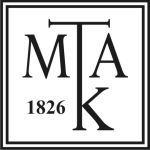Minderheitenrecht in Ungarn in der Zwischenkriegszeit und dessen Anwendung im Alltag am Beispiel der Ungarndeutschen
DOI:
https://doi.org/10.15170/DIKE.2019.03.02.09Kulcsszavak:
Germans in Hungary, ethnic homogenising, minority rights, group-building, sabotaging minority rightsAbsztrakt
After 1920, a new stage began in terms of the endeavours for the ethnic homogenisation in Hungary. The most important obstacle of this was that in consequence of the delamination of the new frontiers of the country, the Germans, who formed a large ethnic minority were not able to find a way towards building their own groups and their self-organization. By means of the international organizations for the protection of minorities this would have been improved, but Hungary made efforts to prevent the German from finding their ethnic revival by bureaucratic means. The majority of these tools were the further developed versions of those employed before 1918. The powerful supervision, the inflaming popular feeling regarding the pan-German danger, prevention of their activity in the field of self-organization, the military enforcement of the law, operations of the police and gendarmerie, advertisements, arrests and violence formed a well-functioning system. Through this system, the international guaranteed rights of ethnic groups could ha
Downloads
Megjelent
Hogyan kell idézni
Folyóirat szám
Rovat
License
Open Access politika: A folyóirat nyílt és korlátlan hozzáférést biztosít a tartalmához. Bárki jogosult a közzétett tartalmak letöltésére, felhasználására, nyomtatására, terjesztésére és/vagy másolására a nemzetközileg elfogadott tudományetikai normáknak megfelelően.
A folyóirat (Kiadó) szabadon elérhetővé és letölthetővé teszi a cikkeket saját hivatalos, kiadói honlapján, időbeli korlátozás nélkül. A cikk első közzétételének joga kizárólagosan a Kiadót illeti. A Szerző elfogadja, hogy a Kiadó a cikket oly módon teszi közzé, hogy a cikk felhasználási jogaira bármely harmadik fél számára az első közzétételt követően a Creative Commons Attribution-NonCommercial-SharAlike 4.0 (CC-BY-NC-SA 4.0) licenc feltételek az irányadók. A Kiadó e licensz keretében átalakíthatja a cikket tetszőleges elektronikus formátumba, a cikket számítógéppel vagy elektronikus adathordozóra másolhatja. A Kiadó a cikk közlési és felhasználási jogát megoszthatja bármely harmadik féllel, illetőleg e jogokat bármely harmadik féllel közösen gyakorolhatja. A Kiadó a Szerző nevében felléphet a cikkel kapcsolatos jogsértések, jogtalan felhasználás és szellemi tulajdon sérelmét jelentő magatartások esetén. Gyakorolhatja mindazon jogokat, amelyeket a fent megjelölt „CC BY NC SA 4.0” licenc feltételek lehetővé tesznek harmadik felek számára.










